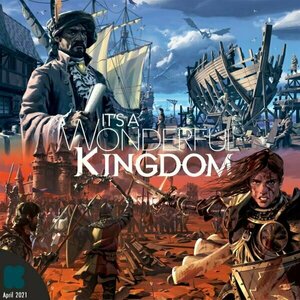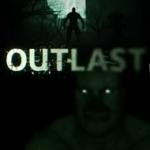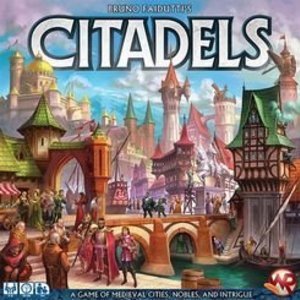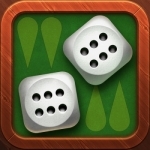Matthew Krueger (10051 KP) rated the Xbox One version of Outlast in Video Games
Nov 7, 2020
The game revolves around a freelance investigative journalist, Miles Upshur, who decides to investigate a remote psychiatric hospital named Mount Massive Asylum, located deep in the mountains of Lake County, Colorado.
Outlast, the player assumes the role of investigative journalist Miles Upshur, as he navigates a dilapidated psychiatric hospital in Leadville, Colorado that is overrun by homicidal patients. The game is played from a first-person perspective and features some stealth gameplay mechanics. The player can walk, run, crouch, jump, climb ladders and vault over objects. Unlike most games, however, the player doesn't have a visible health bar on the screen and is unable to attack enemies. The player must instead rely on stealth tactics such as hiding in lockers, sneaking past enemies, staying in the shadows and hiding behind or under things in order to survive. Alternatively, the player can attempt to outrun their pursuer. If the player dies, the game will reset to the most recent checkpoint.
Most of the hospital is unlit, and the only way for the player to see while in the dark is through the lens of a camcorder equipped with night vision. Using the night vision mode will slowly consume batteries, forcing the player to scavenge for additional batteries found throughout the asylum. Outlast makes heavy use of traditional jump scares and audio cues, which alert the player if an enemy has seen them.
GameSpot gave the game a positive review as well stating that "Outlast isn't really a game of skill, and as it turns out, that makes sense. You're not a cop or a soldier or a genetically enhanced superhero. You're just a reporter. And as a reporter, you don't possess many skills with which you can fend off the hulking brutes, knife-wielding stalkers, and other homicidal maniacs who lurk in the halls of the dilapidated Mount Massive Asylum. You can't shoot them, or punch them, or rip pipes from the walls to clobber them with. You can only run and hide".
The aslyum setting is creepy, horrorfying, scary and terrorfying.
Its a excellent survival horror game.
Nicholaus Prescott (131 KP) created a post
Sep 19, 2018

All American
TV Show
When a star high school football player from South Central is recruited to play for Beverly Hills...

Golf Skins Payout Calculator
Sports and Entertainment
App
Calculates how much each player wins in a golf skins game and who pays who. Simple and easy to use.

Suicide Squad: Kill the Justice League
Video Game Watch
An upcoming superhero game based on the Suicide Squad of DC Comics. The game is a continuation of...

A War of Whispers
Tabletop Game
A War of Whispers is a competitive board game for 2 to 4 players. Five mighty empires are at war for...
Purple Phoenix Games (2266 KP) rated Orbital Conflict in Tabletop Games
Sep 10, 2019
Orbital Conflict is a player versus player (PvP) card game in which the winner is the player showing the most VPs on their cards at game end. It is a game where placement of cards and orientation of cards is paramount in creating a space station that can dole out damage, take a ton of damage, or hybridizes offense and defense using resources granted from off-station investors.
DISCLAIMER: We were provided a copy of this game for the purposes of this review. These are final components, and the game is available from the publisher and other online retail stores. Also, I do not intend to explicitly cover every rule for the game, but to give an idea of game flow and play. -T
To setup the game (in this case a 1v1 head-to-head bout) shuffle all the cards with the white back together and deal each player a hand of five. Shuffle the smaller investor cards to form a draw pile. Give the starting player the Initiative card and you are ready to start!
The game follows a simple game flow following three phases per round: Draw, Main, Combat. During the Draw phase, the player with the Initiative card (I’ll call them the active player) will draw two cards from the white-backed deck (which I will just call cards). Then the other player will draw two cards as well. The active player then draws two investor cards for themselves and places them in front of their play area as possible investors to claim. The other player does the same. If there are any cards containing discard abilities that a player would like to play during the Draw phase, and the discard text reads they may do so during the Draw phase or any phase, they may play them and follow the discard instructions now.
Once done, the game moves on to the Main phase. During this phase the active player will play any cards they wish that are appropriate for this phase, and then the other player will do the same. During this phase players will be playing cards from hand (and as many as they would like) to add on to their space station, activate modules that were previously deactivated, claim investor cards, and prepare for the next game phase. Space stations can be added to via modules. Modules can be single cards, or multiple splayed cards. As you can see in the photo above cards have icons to the left of the white barrier and some will also have icons to the right. Depending on how a card is added to a module certain icons may be covered and therefore inactive. When adding a card to a module (called an extension) the player decides if they want to add the card to the right of the splay, thus covering up icons to the right of the barrier of the covered card, or under the stack to the left of the splay. Additionally, players may flip any card over to have the back showing, which will provide icons usable in a station module. There are restrictions for playing cards, but I will let you discover those on your own.
The game follows a simple game flow following three phases per round: Draw, Main, Combat. During the Draw phase, the player with the Initiative card (I’ll call them the active player) will draw two cards from the white-backed deck (which I will just call cards). Then the other player will draw two cards as well. The active player then draws two investor cards for themselves and places them in front of their play area as possible investors to claim. The other player does the same. If there are any cards containing discard abilities that a player would like to play during the Draw phase, and the discard text reads they may do so during the Draw phase or any phase, they may play them and follow the discard instructions now.
Once done, the game moves on to the Main phase. During this phase the active player will play any cards they wish that are appropriate for this phase, and then the other player will do the same. During this phase players will be playing cards from hand (and as many as they would like) to add on to their space station, activate modules that were previously deactivated, claim investor cards, and prepare for the next game phase. Space stations can be added to via modules. Modules can be single cards, or multiple splayed cards. As you can see in the photo above cards have icons to the left of the white barrier and some will also have icons to the right. Depending on how a card is added to a module certain icons may be covered and therefore inactive. When adding a card to a module (called an extension) the player decides if they want to add the card to the right of the splay, thus covering up icons to the right of the barrier of the covered card, or under the stack to the left of the splay. Additionally, players may flip any card over to have the back showing, which will provide icons usable in a station module. There are restrictions for playing cards, but I will let you discover those on your own.

It's a Wonderful Kingdom
Tabletop Game
It's a Wonderful Kingdom is a standalone 2-player game in a Low-Fantasy universe. Inspired by the...



